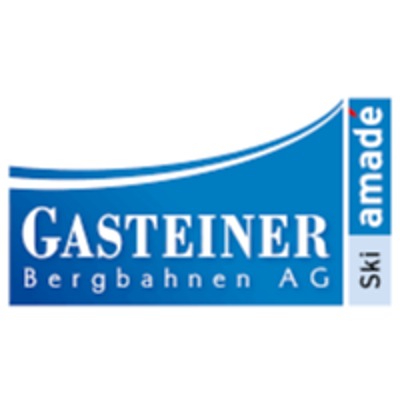Destimetrics - Tempo Is Changing For Lodging Properties In Western Mountain Destinations With Strong Bookings And Rates

With just weeks to go in the six months of the winter ski season, western mountain resorts have been capitalizing on incremental fill in the final two months of the season to boost occupancy and revenue that brought some much-needed recovery to participating resorts in 18 mountain destinations spread across eight western states. In the most recent Mountain Market Briefing distributed by DestiMetrics,* the Business Intelligence division of Inntopia, the report drew comparisons to both last year at this time when the pandemic caused the abrupt end of the ski season, and to data from two years ago to compare results to a more typical winter season. Short-term bookings, made less than 30 days prior to arrival, helped turn the tide by delivering incremental fill—the amount of occupancy that results between the last day of the previous and current month. The aggregated results include data on occupancy, daily rates, and revenues through March 31.
March Results
The impact of “last-minute” bookings to create incremental fill was apparent in a month-over-month comparison. As of one month ago, (Feb. 28), aggregated occupancy on-the- books for the month of March was at 49.7 percent of capacity. That jumped to 62.3 percent by the end of March.
Compared to March 2020, when virtually all resorts were closed on March 14 by official mandates, actual occupancy for March 2021 was up a whopping 96.9 percent in a year-over-year comparison as essentially half the month was lost to the pandemic last March. When compared to the same time two years ago, occupancy was down 9.7 percent compared to March 2019. However, the Average Daily Rate (ADR) showed greater resilience and compared to last year, was up 4.6 percent compared to last year to deliver a substantial 106 percent gain in revenue for the month. But for a more relevant comparison, ADR was up only a slight 1.1 percent compared to March 2019 for an 8.6 percent decrease in revenues compared to two years ago at this time.
Entire winter perspective
Compared to last year, aggregated occupancy for arrivals from November through April is up 1.6 percent with declines in the first four winter months but robust increases for March and April. ADR for the winter is down 8.1 percent compared to the same time last year but even with the slight uptick in occupancy, still led to a seasonal 6.8 percent decline in revenue. However, when compared to pre-pandemic performance of two winters ago, actual occupancy for the 2018-19 winter season is down 19.3 percent with decreases in all six months. The ADR remained remarkably stable, down only one percent compared to two years ago but when the significant decline in occupancy is combined with the slightly lower rates, revenues are down 19.8 percent compared to the same time two years ago.
“Even though overall COVID-19 case numbers are edging back up, the super-charged vaccination effort continues to improve health and safety and as pandemic restrictions are being eased, consumers are becoming more optimistic,” reported Tom Foley, senior vice president for Business Operations and Analytics for Inntopia. “That growing confidence that the pandemic is being effectively managed is a large part of the reason that March continued to see significant bookings following February’s record.”
Looking ahead to summer
Further evidence of the ongoing rebound in mountain tourism is the early data on the upcoming summer months through August as of March 31. In a year-over-year comparison to last year, occupancy on-the-books is up 13.1 percent compared to the same time last year with ADR up 24.4 percent and the combination is showing a strong revenue gain of 41 percent compared to last year. Some positive signs are also clear when compared to two years ago and the summer of 2019. Though occupancy is down 16.3 percent, the ADR is up a dramatic 32 percent compared to summer rates two years ago at this time. Those rate increases are more than enough to currently offset the decline in occupancy with lodging properties currently showing a 10.9 percent gain in aggregated summer revenues versus Summer 2019.
Economic measurements
Continuing to build on February’s positive momentum, the Dow Jones Industrial Average (DJIA) gained a very strong 6.62 percent and marks the second consecutive record-high monthly close. Credit is being given to increasing vaccination rates, broader re-opening policies around the country, and investors reacting to rising consumer confidence and the impact of federal stimulus payments as well as modest declines in first-time unemployment claims. Growing optimism about economic growth and the improving job market helped drive a strong increase in the Consumer Confidence Index (CCI) during March, including a slight upward adjustment to the February numbers. The 21.3 percent surge brought the CCI above 100 points for the third time since March and its highest level since that time.
Good news also emerged on the jobs front as the national Unemployment Rate declined from 6.2 percent in February to six percent in March boosted by the dramatic addition of 916,000 new jobs during the month which was nearly double the previous month. The Leisure and Hospitality sector added 280,000 of those jobs while bars and restaurants captured 176,000 of the new positions. Additionally, 347,000 workers who had suspended their job search in the previous months re-entered the job hunt during March, signaling optimism about returning opportunities.
“Momentum in the past weeks has been positive with booking volume increasing strongly and cancellations dropping off,” continued Foley. “Despite all the uncertainty and turmoil, lodging properties have managed to mostly maintain rates, and although they are down sharply compared to the record-setting season last year, they are only slightly below the 2018-19 season. As the economy continues to improve, widespread vaccination distribution continues to foster safety and confidence, and pent-up demand is starting to be unleashed, confidence about the months ahead for mountain destinations is growing,” he concluded.













